The appearance of the last Egyptian Pharaoh has long been a subject of interest. And since the Queen of the Nile has been portrayed in many ways over the millennia, her true face remains largely a mystery to this day.

Actress Elizabeth Taylor presents one of the most famous portraits of Queen Cleopatra in modern history. Photo: Getty Images
History has left few clues. But that hasn’t stopped historians and Hollywood film producers from racing with speculations about Cleopatra’s real face. Was she as glamorous as Elizabeth Taylor in 1963’s “Cleopatra,” or just a simple woman with “irresistible grace” as the Greek historian Plutarch once claimed?
In addition to Cleopatra’s good looks, another topic that has also inspired debate, especially in recent years, is her race. Although the ancient queen is often depicted as white, some speculate that she was black, or possibly of an entirely different race.
In the 2,000 years since Cleopatra’s death, historians have gathered a number of pieces of evidence that can help us get closer to the truth.
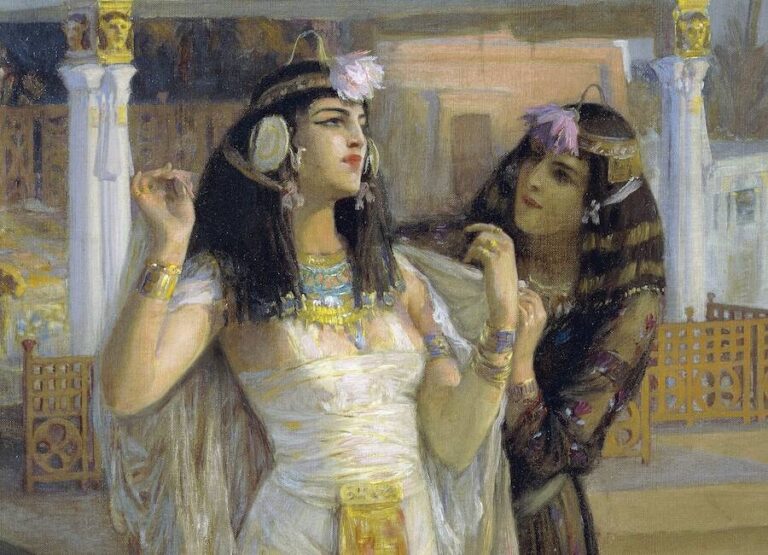
Painting of Cleopatra by Frederick Arthur Bridgman in 1896. Photo: Getty Images
Cleopatra was born in Egypt around 70 BC. But contrary to popular belief, the queen is probably not Egyptian. In fact, she belonged to a line of rulers descended from Ptolemy I. As a general and historian, Ptolemy traveled to Egypt with Alexander the Great. Here, Ptolemy crowned himself king after the death of Alexander the Great in 323 BC. Since Ptolemy had conquered many of the native Egyptians at the time, they essentially accepted his descendants as an extended lineage of the Pharaohs.
But Ptolemy was from Greece, and his family apparently avoided marrying native Egyptians. Instead, they often marry each other. This is an important fact, because instead of the question “What does Cleopatra look like,” people are more curious: “Is Cleopatra black?”
It is difficult to answer with certainty. For although Cleopatra’s Greek origins on her father’s side are well documented, her unidentified mother’s origin remains unknown.

A bust believed to be of Queen Cleopatra, born between 40 and 30 BC. Image: Wikimedia Commons
Racial controversy
The controversy over Cleopatra’s race has raged for decades now, with many questioning the powerful queen’s unclear ethnicity, especially as most of her life has been spent in North Africa.
But the topic has stirred up again in the debate over the appearance of Cleopatra in recent years. The reason is that some moviegoers have criticized Elizabeth Taylor’s famous 1963 performance as well as the recent portrayal of Israeli actress Gal Gadot in a new Cleopatra film.
If Cleopatra were indeed black, one cultural historian has stated that would “question the entire structure of Western civilization”, as it would mean that the political world is fundamentally black. The story revolved around a black woman during a pivotal period in global history.
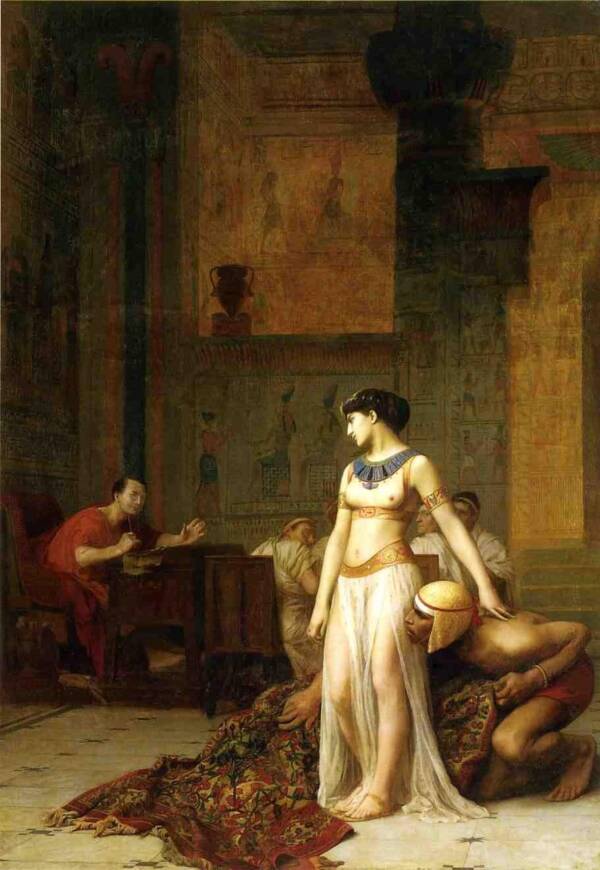 Cleopatra debuted Julius Caesar in a famous work by Jean-Léon Gérôme in 1866. Photo: Wikimedia Commons
Cleopatra debuted Julius Caesar in a famous work by Jean-Léon Gérôme in 1866. Photo: Wikimedia Commons
Black or not, many people consider Cleopatra gorgeous. During her life, she was passionately in love with two of the most powerful Romans of all time: Julius Caesar and Mark Antony.
Legend has it that in 48 BC, Cleopatra decided to go to see Julius Caesar, so she wrapped herself in a carpet and secretly brought it to the place of the Roman general. Cleopatra successfully seduced Julius Caesar, and they quickly became allies and lovers. Not long after, Cleopatra defeated her brother and husband, Ptolemy XIII, and gave birth to Caesarion, Caesar’s son.
After Caesar’s assassination in 44 BC, Cleopatra began to keep an eye on the general Mark Antony. According to the description of Cleopatra biographer, Stacy Schiff, Queen of the Nile came to the city of Tarsus (in present-day Turkey), using her beauty to “defeat” Antony. Schiff wrote: “She lay on her side beneath a canopy of gilded trees, dressed as Venus, while beautiful young men, like Cupid, stood beside her, fanning her.” “As soon as they saw Cleopatra.” , Antony bowed before her like a young man,” noted Greek historian Appian.
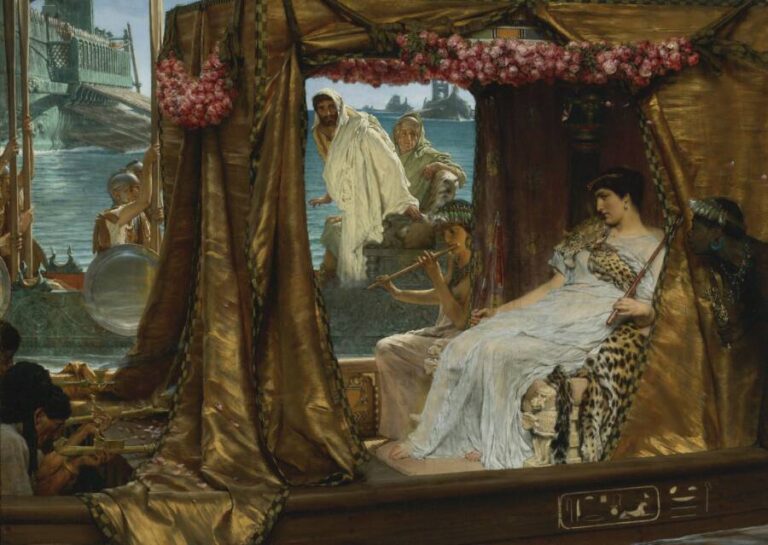 In a 19th-century painting, Cleopatra sits on a boat, striking to meet Mark Antony in Tarsus. Image: Wikimedia Commons
In a 19th-century painting, Cleopatra sits on a boat, striking to meet Mark Antony in Tarsus. Image: Wikimedia Commons
Which leads to an interesting question: How often did ancient Greek and Roman historians describe Cleopatra?
Cleopatra’s beauty
Most Roman historians describe Cleopatra as beautiful, but this is certainly not the best description of an Egyptian Queen.
Speaking of Cleopatra’s meeting with Caesar, Roman historian Cassius Dio described the Queen as “wonderful when others saw and listened to her, with the power to subdue everyone, even a man in love with her. past his prime.” Dio also described Caesar as “absolutely captivated” when he first met the Queen.
Ancient Greek philosopher Plutarch offers a deeper insight into Cleopatra’s appearance. In describing Cleopatra’s meeting with Mark Antony, he noted that “she visited Antony at a time when the woman was at her most radiant and at the height of her intellect”.
“Her beauty, as we are told, is not entirely incomparable, nor will it be offensive, but conversing with her has an irresistible allure . . . she was also sweet, and her tongue, like a stringed instrument, could easily switch to any language she liked,” wrote Plutarch.
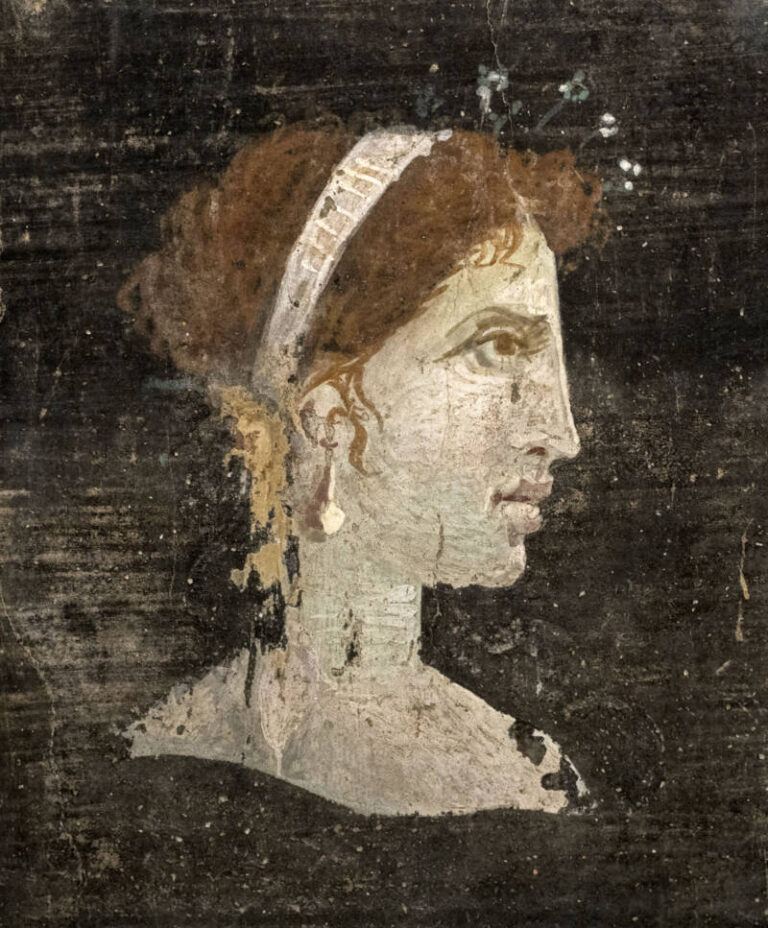
A 1st century painting believed to depict Cleopatra after her death. Image: Wikimedia Commons
But their description should still be considered in historical context. The Romans disliked and distrusted Cleopatra as a foreigner and a powerful woman. The first-century poet Horace described her as “a mad queen… plotting… to destroy Rome and overthrow the [Roman] Empire”.
Many male leaders of the Roman era described Cleopatra as an evil “slut” who could manipulate powerful men if they were not cautious. This misrepresentation partly overshadowed Cleopatra’s many impressive qualities, such as her political skills or her ability to speak multiple languages, which are still underappreciated to this day.
Physical clues
But modern historians need not rely on ancient writers, for Cleopatra left some clues about her appearance.
Some such clues can be found in the coins. In the photo of the coin minted by Queen Cleopatra (below) is a portrait of her with curly hair, a hooked nose and a protruding chin. Most of Cleopatra’s coins have a similar image – especially the slightly hooked nose. However, her image may have been romanized to match Mark Antony.
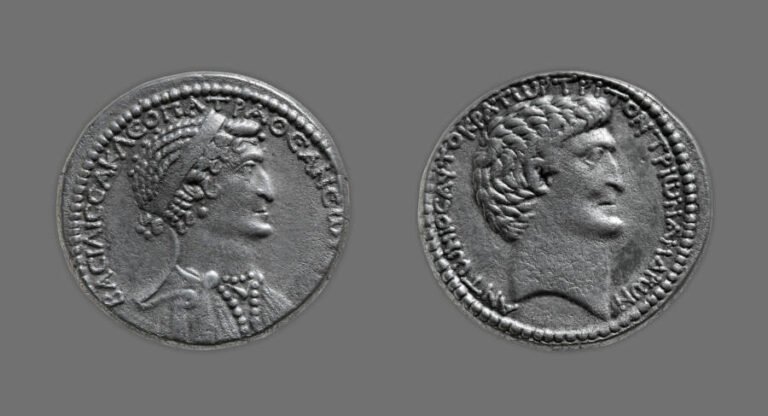
Cleopatra (left) and Mark Antony (right) on two sides of an ancient coin. Photo: Public Domain
In addition to the Romans, the Egyptians also left some clues. The outer walls of the Temple of Hathor are covered with carvings from Cleopatra’s time. She is depicted in a work with Caesarion, son of Caesar.
However, if the Romans “Romanized” Cleopatra, the Egyptians also “Egyptized” her. Cleopatra is depicted as a goddess – which makes sense since Cleopatra herself associated herself with the goddess Isis throughout her life.
Intellectual beauty is overshadowed
For centuries, historians have debated what Cleopatra looked like and whether she was really as beautiful as the stories tell. But some experts have been frustrated by all the questions about Cleopatra’s real face.
Egyptologist Sally-Ann Ashton says: “Why are we so obsessed with the debate over whether Cleopatra is attractive or not. When should we really see her as a powerful and influential ruler from 2,000 years ago?”
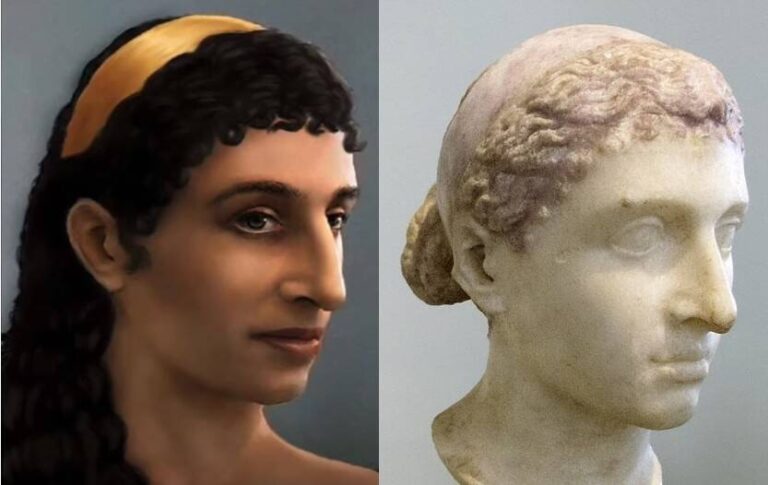
An artist’s rendering of Queen Cleopatra based on the historic statue. Image: YouTube / Wikimedia Commons
In other words, the men of Cleopatra’s day attributed her success to her looks, not her intellect. Most of them make no mention of the Queen’s political prowess and fluency in languages. Philosopher Plutarch acknowledges Cleopatra’s “charming intelligence”. But others – Hollywood playwrights, artists and producers – mainly focus on the good looks of the Egyptian Queen.
So what did Cleopatra really look like? We may never know for sure. Despite many search efforts, her remains were never found. The true face of the Queen of the Nile remains a mystery to this day.
But while good looks may fade, Cleopatra’s story has stood the test of time. Two thousand years after her death, Queen Cleopatra still captivates the world.
Source:baotintuc.vn








